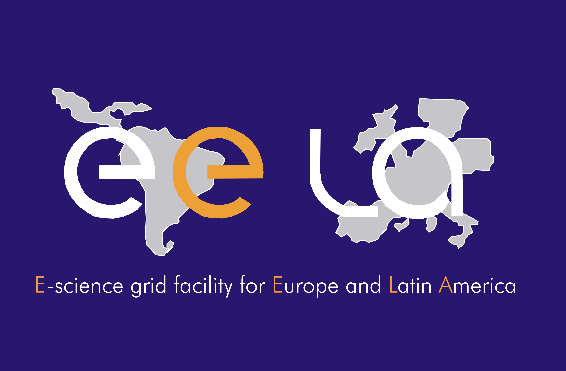EELA

E-science grid facility for Europe and Latin America - EELA
Started: January 1st, 2006
Finished: January 2008
Funding: EC – FP6, SSA (Specific Support Action)
Sitio web: http://www.eu-eela.eu/first-phase.php
General objective
To bridge the gap related to the insufficient level of e-Science in Latin America, which is understood as the set of scientific activities developed through the use of globally distributed resources through the internet.
Participants
Coordinator - CIEMAT (Spain), CSIC (Spain), UFRJ (Brazil), UPV (Spain), ULA (Venezuela), CNEN (Brazil), INFN (Italy), CUBAENERGIA (Cuba), UTFSM (Chile), CLARA (Latin America), UFF (Brazil), UNAM (Mexico), CEDERJ (Brazil), RNP (Brazil), CERN, LIP, SENAMHI (Peru), UC (Spain), REUNA (Chile), UDEC (Chile), REDIRIS (Spain), UNLP (Argentina).
Funded by the European Commission with 1.7 million Euro, the EELA Project aimed to build a digital bridge between the existing e-Infrastructure initiatives that are in process of consolidation in Europe (in the framework of the European EGEE Project), and those that were emerging in Latin America, throughout the creation of a collaborative network that shared an interoperable Grid infrastructure that did support the development and test of advanced applications.
EELA Objectives:
Establish a scientific collaboration network:
- Setting up the structure of the collaboration network.
- Implementing adequate support mechanisms.
- Adopting policies, regarding the shared use of the e-Infrastructure.
- Evaluating new possible areas of collaboration and relevant partners.
Set up a pilot e-Infrastructure in Latin America, interoperable with the existing one in Europe (EGEE):
- Adopting a Security Policy based on public and private certificates and establishing Certification Authorities (CAs).
- Creating Virtual Organisations (VOs) for identified research communities.
- Supporting advanced use of the network and fully integrating it in the shared e-Infrastructure scheme.
Identify and promote a sustainable framework for e-Science:
- Identifying research communities and applications that will be enhanced thanks to the use of a shared e-Infrastructure.
- Supporting a dissemination effort towards identified and new communities.
- Defining a roadmap for a future consolidated e-Infrastructure in Latin America and its links to Europe.
Because of the scope of its action, EELA helped to reduce the digital divide in the Latin-American region, by making available to researchers a very powerful e-Infrastructure that served to make complex investigations in a simple way; this e-Infrastructure could be extended to serve as basis for a greater community of users. In addition, this effort allowed Latin America to enter in an ordered form, and as a group, in the Grid technology. EELA ended with great success in December 2007.

Montevideo 11400. Uruguay.



